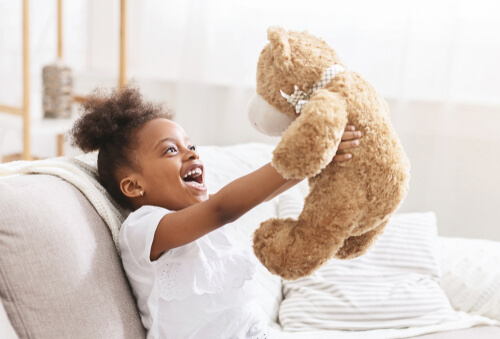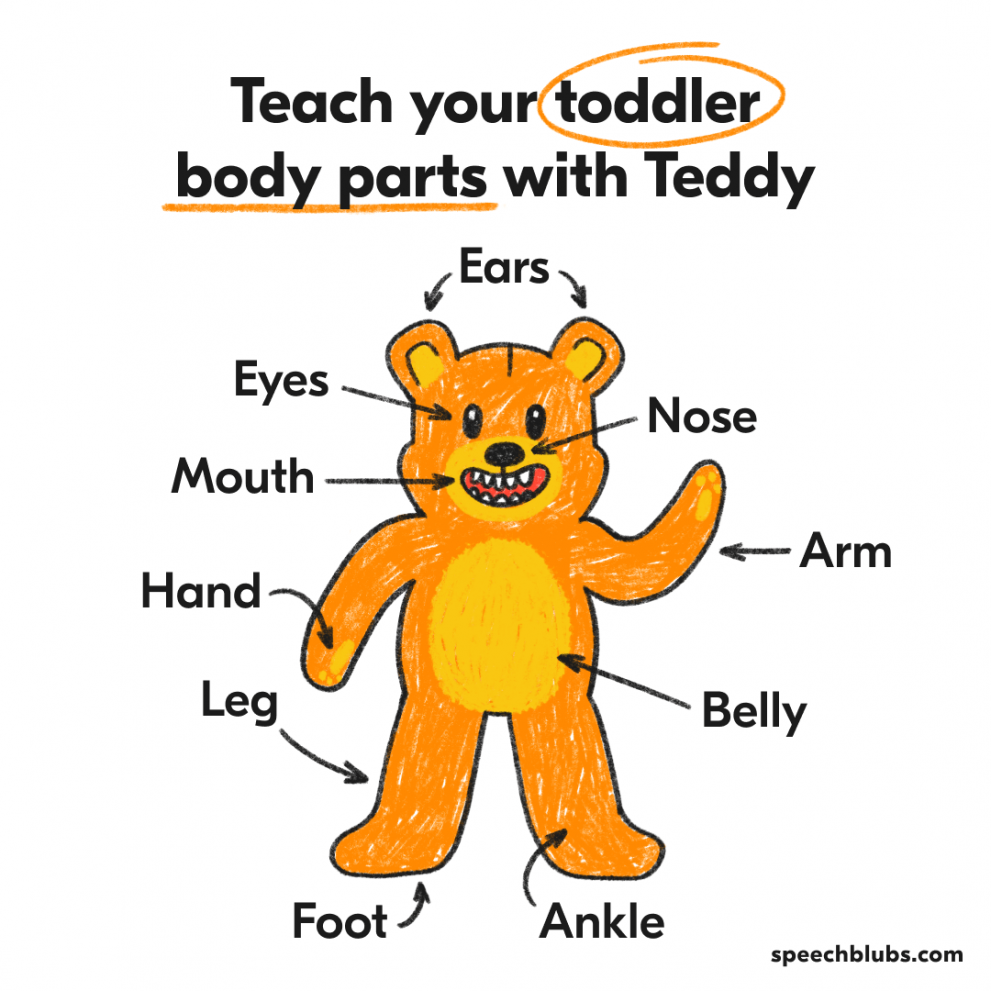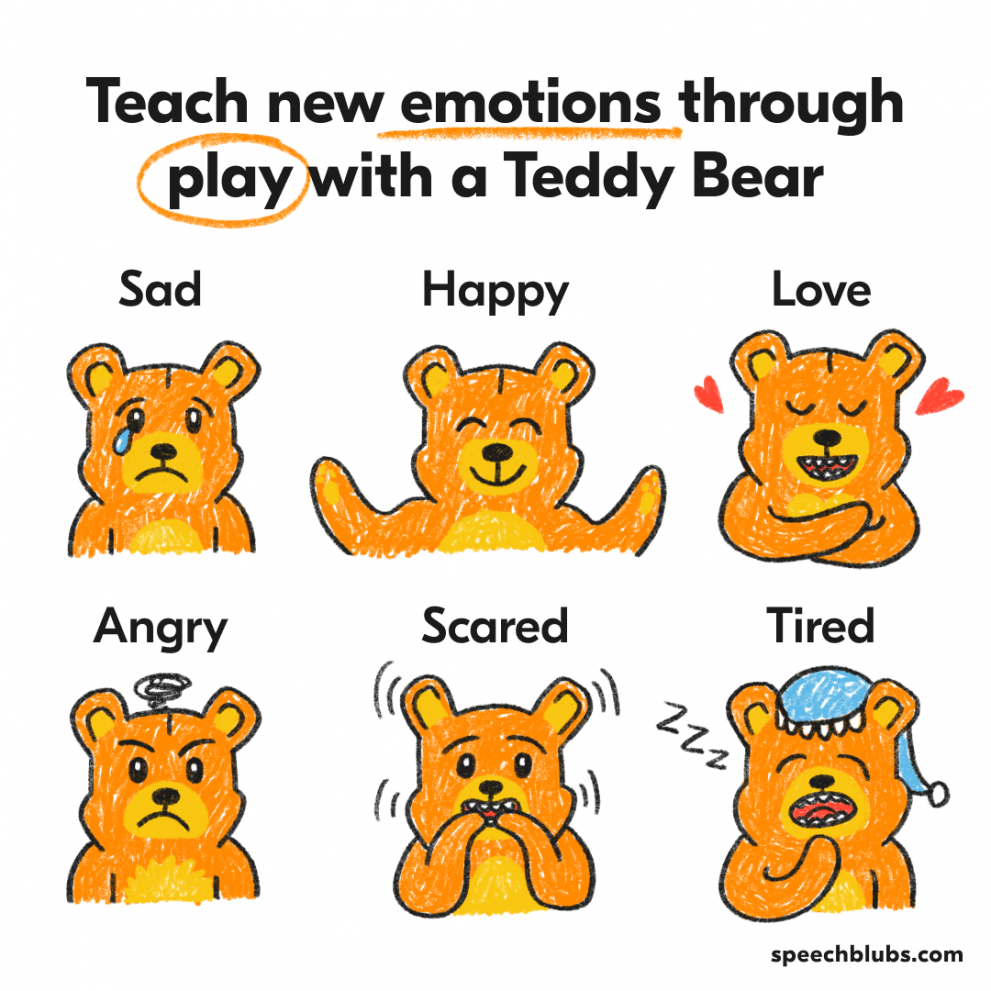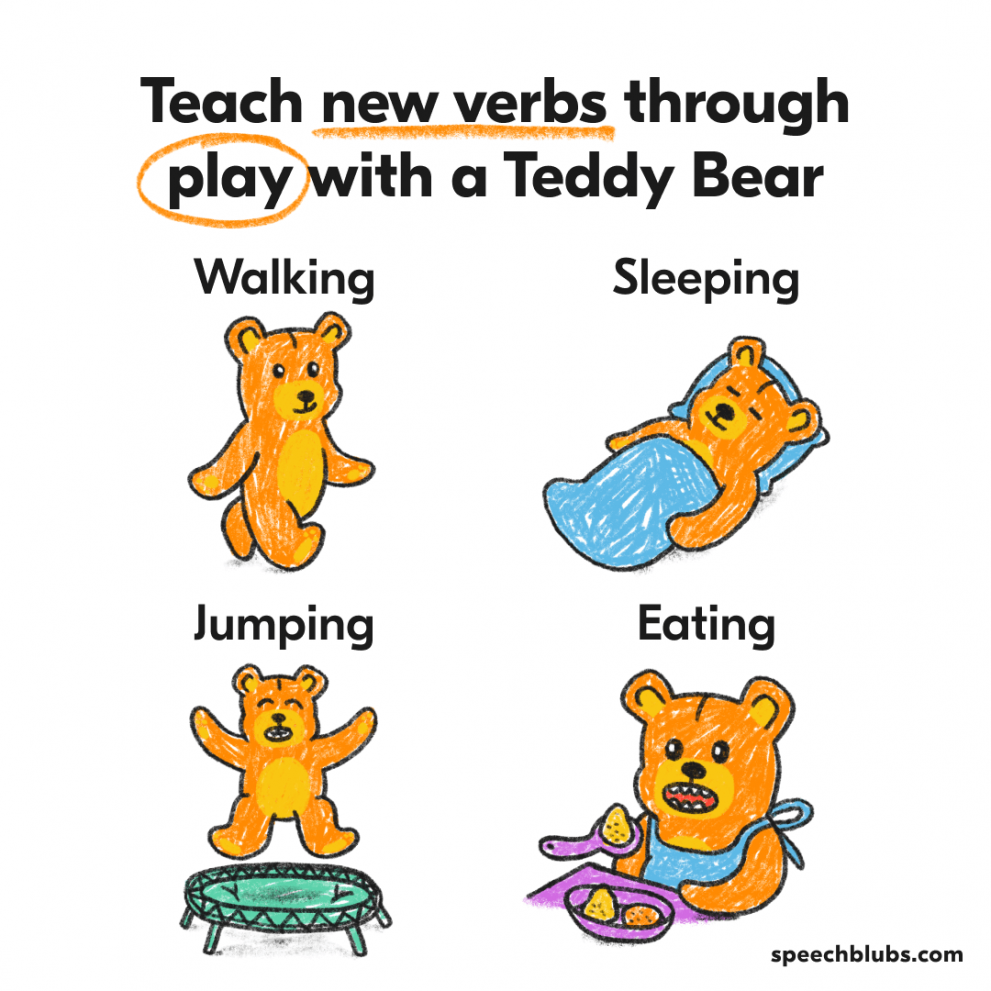25 Kids Games with a Teddy Bear to Develop Language
Jan 15, 2022 I already said this and I am saying it again: Not all therapy resources need to cost the earth (literally and figuratively).
Kids’ games for learning language can be made up using things that you already have at home.
If you want to make a start without breaking the bank, apps such as Speech Blubs are a simple and cost-effective place to start.
Start your free trial today and watch your child learn right away!
Boost Your Child’s Speech Development!
Improve language & communication skills with fun learning!

We also have a bunch of fun ideas for to play with your toddler using a simple toy like a balloon. Keep reading to find out how to play with a teddy bear and expand vocabulary while playing!

1. Nouns
Model (saying the word for your child to hear) the word “teddy bear” during play. Step up the activity by putting the teddy with other items and see if your child can locate the teddy bear on verbal request. For example,where’s teddy?
2. Verbs
Model verbs and actions using the teddy bear during play using one, two, and three-word sentences; for example, (1) Teddy walking, (2) Teddy sleeping, and (3) Teddy jumping in a puddle. Step up the exercise by saying a verb sentence and see if your child can use the teddy to act it out.
3. Body Parts
Point to and model the words for basic body parts on the teddy bear for example, eyes, nose, leg, and arm. Step up the activity by playing games like “Simon says . . . touch Teddy’s nose.”

4. Adjectives
Model adjectives (describing words) related to the teddy bear while playing and interacting with the teddy for example, soft, furry, fluffy, hairy, or shiny. Step up the activity by helping your child match other items in the environment to the adjective used for the teddy.
5. Emotions
Use teddy bear to act out and model emotions and emotion vocabulary, for example, sad, happy, excited, or scared. Take it in turns to act out the emotion with Teddy and see if the other can guess.

6. Concepts
Model concepts such as big/small, tall/short, hot/cold, hard/soft, etc. when playing with the teddy bear. Step up the activity by using a selection of teddies and toys to compare using these concepts.
7. Clothes
Support using and understanding of vocabulary for clothes by dressing and undressing the teddy bear. If the teddy bear doesn’t have its own clothes, using your child’s own clothes can be just as successful and often super fun. For example, putting a hat and socks on the bear while naming the items. Step up the activity by laying out a selection of clothes and see if your child can follow a simple short instruction to dress the bear.
8. Possessives (Ownership)
Model using possessives in simple sentences to show who an item belongs to for example, teddy’s cup, daddy’s hat, teddy’s car, or mommy’s cake. Play games like tea party or get Teddy involved in snack time to help model who things belong to.
9. Pronouns
Model how “she” and “he” can be swapped into a sentence instead of “teddy.” Make teddy bear do an action and model “he is walking” or “she is sleeping.”
10. Adverbials
Model adverbials (where words) when playing with your child, putting the teddy bear in different places around the room/with objects for example, Teddy is under the chair, Teddy is in the bath, Teddy Bear is next to the box.

11. Where?
Model asking and answering “where” questions during play for example, Where is Teddy sleeping? Where is Teddy Bear hiding?
12. What?
Model asking and answering “what” questions during play for example, “what is Teddy doing?”, “What is Teddy Bear eating?”, or “What is Teddy wearing?”
13. Why?
Model asking and answering “why” questions during play, for example, “Why is Teddy Bear running?”, “Why is he wearing wellies?” or “Why is he putting a plaster on?”
14. Following One/Two/Three Key Step Commands
Practice using simple one, two- and three-step instructions during play using the teddy bear as a prop. It’s good to model the actions yourself to help your child learn. For example, Step 1 – “Teddy brush hair”; Step 2 “Teddy brush hair and put on hat”; Step 3 – “Teddy brush hair, put on hat, and drink tea.”

15. Encourage Reading
Use a teddy bear when reading books to act out the parts and role play the narrative.
16. Encourage Small World Play
Use a teddy bear to recreate activities you do in the real world for example, making tea, going on a holiday, getting ready for bed, while using toys that mimic real world objects.
17. Imaginative Play
Use a teddy bear to imagine new ideas and use objects unconventionally for example, playing teddy is flying to the moon on a plastic bottle wearing a saucepan for a helmet.

18. Turn-taking
Use a teddy bear in simple turn-taking games where teddy also has a turn, for example, rolling a dice or throwing a ball. Your child can practice waiting for their turn and using turn-taking related language such as “your turn” or “its teddy’s turn.”
19. Social Language
Model social language and greetings such as “hello,” “thank you,” “can I play?” or “what is your name?” Your child can use the teddy bear to role play social language.
20. Choices
You can practice giving and making choices with Teddy as a prop for example, “Would Teddy Bear like the blue plate or the red plate?” or “teddy would you like a banana or an apple?”
21. New Vocabulary
When introducing new vocabulary for example, from a school topic or from a book you are looking at you can use teddy bear as a familiar item within the new language. For example, looking at a new zoo vocabulary – Teddy can play going to the zoo, he may meet a lion, Teddy thinks lions are scary, Teddy fed the lion some meat.
22. Sound Pronunciation
Model tricky consonant and vowel sounds using teddy bear as a prop to reduce the pressure and formality of the activity for example, Teddy might walk along the floor, each step making a “t” sound. Teddy might hit a drum, each time Teddy makes a “b” sound.
23. Multi Syllable Words
Model tricky multi-syllable words by breaking down the word into syllables. You can emphasize the syllables by making Teddy Bear clap or jump in time with the syllable. It gives your child a more visual and tangible way of breaking down the sounds for example, e-le-phant, or mi-cro-wave.
24. Pitch
You can model playing with pitch of voice with your child by singing. Hum or sing high and low, using Teddy Bear as a visual by raising him high and low to match the pitch.
25. Creating Narrative
Create new narratives with your child using Teddy. You can think about who is Teddy going to meet? Where is he going to go? What time? How is Teddy going to get there? Use Teddy Bear to create new and exciting characters.
